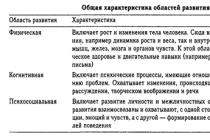The 18th century was a century of contrasts in Russia. Through the window opened to Europe by Peter I, European customs began to seep into Russian life. Russian life was turning into a bizarre mixture of “French and Nizhny Novgorod,” and this was reflected in literally everything, including, of course, such a delicate subject as love.
In pre-Petrine Rus', young men and women very often met after matchmaking, but even then, right up to the wedding itself, there was an impassable gulf of prejudice and false modesty between them. Attempts to overcome it were strictly suppressed by parents, who not only did not allow the young people to get closer, but even prevented their simple communication. There was no question of a premarital love affair! Lovers who managed to deceive the vigilance of their parents risked not only their reputation. At best, a monastery awaited a girl caught with her lover. The young man could end up in exile, or even lose his life. The accusation of adultery remained on them forever - like a stigma.
But then Peter appeared, built a new capital, and it was there, in St. Petersburg, that innovations were introduced into Russian life by the firm hand of the restless Tsar and the old way of life that had migrated from Moscow. One can imagine what it was like for yesterday’s boyars to take their daughters to assemblies in open dresses, when until recently even mentally imagining a woman in this form was considered sinful! Moreover, at assemblies a newfangled petimeter (from French this word translates as dandy) could approach a girl with impunity, turn her head overnight and destroy the fruits of her Domostroev upbringing.
The fathers, however, had nothing to do, and, fearing the tsar’s harsh temperament, they had to obey. It seemed that Russian beauties received freedom, but that was not the case - freedom was purely external, and at home the fathers took revenge. This is how the families of Russian nobles, where there were daughters, lived a double life - for show, quite in a European way, but behind the walls of their houses, just like a hundred or two hundred years ago.
Therefore, in order to get to know the girl they liked better, young people resorted to all sorts of tricks, especially since the new morality did not prohibit such behavior. For example, midshipman Smolyaninov climbed into the attic in the house of Prince G. in the hope of waiting until nightfall and from there entering the chambers of the young princess, but the house, unfortunately for him, turned out to be dilapidated, and at one fine moment Smolyaninov fell straight into the bedroom of the princess-mother. The poor fellow was taken for a devil and barely escaped from the servants, who were very determined towards evil spirits. Another young admirer snuck into the prince's mansion, disguised as a courtyard wench, and mistakenly ended up in the room where the owner of the house, a great lover of women, was resting after a heavy libation. Having opened his eyes and seeing the girl next to him, the owner immediately gave free rein to his hands and almost gave up the ghost from fear when the girl spoke in a deep voice. Both stories reached the king. Peter laughed and did not punish the insolent people.
Young people who were not so bold had to watch the objects of their adoration from afar, and the girl was often unaware of the existence of an ardent admirer. Poor things did not often get married of their own inclination, and sometimes they only got the opportunity to really get a good look at their betrothed at the wedding.
The vast majority of married couples had no courtship period at all. And how could they courtship if young people were not allowed to talk without witnesses, and flowers sent to the bride before the official matchmaking looked extremely indecent in the eyes of old-regime parents and could upset the marriage?
At the same time, the cream of the noble society, which quickly adopted Western customs, were more free to express their feelings. No one was shocked, for example, by the appearance of the Holstein Duke Karl under the balcony of his future wife Anna Petrovna with a whole orchestra and singers who sang serenades instead of the Duke, who had neither a voice nor hearing. The behavior of His Serene Highness Prince Grigory Potemkin, whom high society saw as a trendsetter, during the period of his affair with the famous beauty Princess Ekaterina Dolgorukova is indicative. Once Potemkin arranged a magnificent dinner in honor of his passion. According to general opinion, the dessert prepared by His Serene Highness with his own hand was especially successful - crystal vases filled with diamonds were served, and everyone present could work with a spoon to their heart's content. However, the Most Serene Prince was fickle and soon staged no less fabulous spectacles in honor of another beauty. Being faithful was not the custom of 18th-century men.
Another thing is women. If we discard the ladies of high society, for whom, since the reign of Empress Elizabeth Petrovna, it was considered bad form not to have a lover, then we should recognize fidelity as the main distinguishing feature of a Russian woman. Often, however, it was forced fidelity. The memoirist of the late 18th century, not without irony, concluded: “In our country, one might say, only women loved.” Girls were protected from the slightest contact with everyday experience and entered into marriage in chaste ignorance. Experience replaced imagination, the future husband was painted in rosy tones, and at first they fell in love with him recklessly. They got married at the age of fourteen or fifteen, then family worries began, children were born, and the first man most often turned out to be the only one for life - even if the love for him faded.
The most common way to fight for the right to freely love someone to whom the soul is drawn is to escape and secretly marry a loved one. There were not as many such incidents as it might seem if you study history from literary works, but among them there are truly amazing ones. A poor nobleman, Redkov, kidnapped a girl of a noble family and brought her to church, but before the priest could begin the wedding ceremony, her pursuers appeared. Redkov's friends rode out to meet them, and a real battle broke out in the field, which continued until the unsuspecting priest crowned the newlyweds.
And here is a completely unique case: a certain girl Anastasia, having learned that matchmakers had arrived from an old widower, climbed out the window and headed to the cavalry guard barracks, where officer Myagkov served, whom they had met the day before and hardly exchanged two or three words. It is impossible to imagine what Anastasia said to Myagkov, but the cavalry guard took her to her apartment, and the very next day they left the church as husband and wife.
Not everyone, however, was given happiness at such risk. Most married couples arose in the traditional way, and the fact that the young couple barely knew each other before the wedding did not always interfere with their future married life. Typical in this sense is the story of the marriage of the famous Russian poet Gavrila Derzhavin, told by himself. After three fleeting meetings, he fell deathly in love with the seventeen-year-old girl Ekaterina Bastidonova and sent his friend Kirilov “to make an urgent proposal to mother and daughter.” After listening to the matchmaker, Bastidonov’s mother asked for a few days to answer and rushed to collect information about the groom. During these days, Derzhavin could not stand it and stopped by the Bastidonovs. Mother was not at home. Taking advantage of this, the poet asked Catherine if she knew “about searching for him.” “Mother told me,” the girl answered. “What do you think of this?” - “Everything depends on her.” - “But... can I hope?” - “You don’t disgust me...” Then the mother returned and found Derzhavin at her daughter’s feet. Fortunately, the information collected about the groom showed him in a favorable light, and the poet’s freedom of behavior was forgiven. The engagement took place on the same day; the young couple soon got married and lived in love and harmony for many years.
Alexander Rumyantsev and Marya Matveeva, parents of the outstanding Russian commander Pyotr Rumyantsev-Zadunaisky, did not even have such a “declaration of love” before their wedding. Alexander Rumyantsev rose from the very bottom to the inner circle of Peter I, but did not acquire a fortune and decided to improve the situation by getting married. He wooed the daughter of a rich man, received consent and a promise to give a thousand souls as a dowry. This became known to the king, who wished to see the bride. In the evening he came to her father, stood in the doorway, peering intently at the girl, and said: “Nothing will happen.” The rich chosen one of Rumyantsev was indeed as terrible as a mortal sin. The next day, the tsar called Rumyantsev and with the words: “Get ready, let’s go to matchmaking,” he took him to Count Andrei Matveev, his distant relative, who had a nineteen-year-old beautiful daughter of marriageable age. The wedding took place without delay.
Russian monarchs (and, in imitation of them, the court nobility) loved to arrange the matrimonial affairs of their entourage. Sometimes their consultants were professional matchmakers and matchmakers who served nobles of all ranks. In the “card file” of the marriage agents of that time, along with the name and age of the young lady, a detailed inventory of the dowry and the conditions under which the parents agreed to marry her were entered. Most often, women were involved in matchmaking, but it happened that men also earned their living from this craft. Among them there were true virtuosos of their craft. The clever young man Guryev, who managed to arrange the wedding of the Polish rich man Count Skavronsky with the beautiful Ekaterina Engelhardt, the niece of the powerful Potemkin, received from the grateful count three thousand souls of peasants as a reward and immediately turned into the richest man.
The inexpressiveness and, for the most part, lack of courtship was compensated for in Russia by the pomp of weddings. Moreover, the higher the position of the newlyweds, the longer the wedding lasted, sometimes turning into a grueling marathon. So, during the wedding of Anna Leopoldovna, the niece of Empress Anna Ioannovna, and Prince Anton Ulrich of Brunswick, the future parents of the infant Tsar Ivan Antonovich, only the wedding procession moved for eleven (!) hours, and the entire celebration lasted seven days. Ceremonial exits gave way to ceremonial exits, upon return from which there followed receptions that smoothly flowed into dinners, and in the evenings balls alternated with concerts...
And here is how the wedding of Count Pushkin and Princess Lobanova took place at the end of the first quarter of the 18th century. The newlyweds, arriving from the church, were met by the marshal, that is, the wedding director (Peter I often happily performed this role at the weddings of the Russian nobility), and seated at tables under canopies - the bride at the women's table, the groom at the men's table. Then the hosts and guests prayed, the marshal brought the newlyweds a glass of vodka, and dinner began with endless changes of dishes. The marshal made toasts, personally served glasses to the bride, groom and their relatives, and made sure everyone drank to the bottom. The first day of the wedding ended with a ball, after which, already close to midnight, the guests lit torches and crowded into the bride's bedroom, where two laid tables awaited them: one with sweets for everyone and the other personally for the groom, who was supposed to get drunk (alas, sobriety Russian newlyweds in the old days are a myth!). All this time, from early morning until late evening, the bride was shackled in a rigid bodice and dressed in a stiff brocade skirt. On her head she had - according to the fashion of the time - a gigantic structure of hair and various objects woven into it.
Preparing the newlyweds for the first night was a rather complex ritual. This is how the future Emperor Peter III and the future Empress Catherine II were escorted to their wedding bed. The newlywed was undressed by Empress Elizabeth, Princess of Hesse, Catherine's mother - Joanna Elizabeth, Countess Rumyantseva (the same daughter of Count Matveyev) and a dozen other ladies of state and ladies-in-waiting. The naked newlywed was dressed in a chemise, and a robe was put on top of the chemise. Meanwhile, in the next room, Count Razumovsky (the empress’s secret husband), Prince Augustus of Holstein and several other nobles were undressing the Grand Duke. Then Peter, also dressed in a robe, was brought to Catherine's chambers. The newlyweds knelt before Elizabeth and received her blessing. After this, the Empress and her entourage left the bedroom, and three ladies remained with Peter and Catherine - Joanna Elizabeth, Princess of Hesse and Countess Rumyantseva. They put the newlyweds to bed, gave them the last instructions and only then left.
Exactly sixteen years after this wedding night, Catherine II became empress. Her reign broke the traditions of “Domostroy” among the capital’s nobility and thus, by the way, determined the flourishing of Russian culture at the beginning of the next century - this is the time we call Pushkin’s. A new era has come when love has ceased to be Cinderella at the ball of life. And really, what could a ball be without love?
FUN OF THE FIRST PERSONS
"The higher a person is raised above others,
the more vicious is his pleasure."
Sex, undoubtedly, is precisely the litmus test that unmistakably reveals many, sometimes hidden, qualities of a person.
You can strictly adhere to the rules of etiquette, you can brilliantly play greatness and nobility, wisdom and humanism, willpower and holiness, but true qualities are revealed only when the king remains naked...
There have always been many legends about the top people regarding their sexual exploits. These legends corresponded to varying degrees with the real state of affairs, but one thing they can be considered quite reliable is the increased sexual desires of these people.
There is a well-known relationship between the level of power and the level of desires, which are determined not so much by physiological as by mental needs.
ARGUMENTS:
"...a person who feels the need to prove his strength to himself, to show others his superiority, or to subjugate others through dominance in the sexual sphere, will be sexually easily aroused and experience painful tension if his sexual desire is not satisfied. He will be inclined to think that his desires are rooted in the physiological needs of the body, whereas in fact they are determined by his mental state."
ERICH FROMM. A man for himself
The mental need for comprehensive dominance over other people, interacting with natural drives, often manifests itself in the most unexpected forms, either corresponding or directly opposite to the traditional image of the ruler.
As Catherine the Great once said, winners are not judged.
But who will forbid discussing them?
And not so much their personal secrets as facts that have become part of history...
Gaius Julius Caesar, Roman emperor and great general. The one who crossed the Rubicon River with the words: “The die is cast!”, the one who said: “Veni, vidi, vici” (I came, I saw, I conquered), and whose last phrase was: “And you, Brutus!”
In his youth, at the very beginning of his military career, he acted as a passive homosexual during a service trip to Bithynia, to the king of this country, Nicomedes, who became his first “husband.”
According to the historian, Curio the Elder called him “the husband of all wives and the wife of all husbands.”
"Blue" adventures did not prevent, however, Julius Caesar from being recognized as the winner of a huge number of women. His mistresses were the wives of many Roman senators, the Moorish queen Eunoe and the Egyptian queen Cleopatra, who bore him a son, and his long-term mistress Servilia, Brutus' mother, eventually brought him together with her daughter Junia III.
Each of Caesar’s many campaigns brought noticeable additions to the list of his mistresses, and the soldiers, not without reason, sang: “Hide your wives, we are bringing a bald libertine into the city.” By his order, the people's tribune Helvius Cinna even prepared a bill according to which Caesar was allowed to take an unlimited number of wives to increase the number of heirs of the Divine Julius.
Indeed, a great man is great in everything.
Augustus, Roman Emperor, successor of Julius Caesar. Augustus, who, like Julia, was called the Divine, could not resist the temptation to try on the guise of a god, which he did, organizing a grandiose feast, popularly called the “Feast of the Twelve Gods.” The participants in this feast were dressed as gods and goddesses, and the emperor himself played the role of Apollo, of course, with all the prerogatives of this god, who showered love on everyone around him in a wide variety of forms, regardless of gender.
This unbridled and luxuriously furnished orgy caused general indignation also because it was distinguished by truly divine luxury and abundance, while famine reigned in Rome. Everyone had long been accustomed to the open depravity of Augustus and did not blame him for this quality, but this luxurious feast in front of the hungry Romans was regarded solely as the impudent lawlessness of the emperor, which caused a wave of general indignation.
His law on marriage was also considered provocative, radically undermining all established traditions and sanctifying general depravity, which before this had nevertheless been forced to dress up in the toga of external decency.
It was Augustus who openly kept the boy Sarmentus with him for “backside” entertainment; it was he who established special court positions of “commissars of voluptuousness,” who were supposed to invent and develop new forms and types of sexual intercourse. This kind of “design bureau” existed for quite a long time under subsequent emperors, inventing not only methods and options, but also special accessories and devices that can now be seen on the shelves of sex shops.
So, everything new is well forgotten old.
Tiberius, Roman Emperor. This gentleman went even further in his sexual manifestations than his predecessors, not limiting himself to costumed feasts with naked “goddesses” or one or two comfort boys.
Lustfulness was combined in him with a perverted, pathological cruelty, inherent, however, in many of his predecessors and followers.
On the island of Capri, where he lived for some time, the most sophisticated and cruel executions were carried out interspersed with the most fantastic orgies, the mention of which still attracts crowds of tourists to Capri.
Tiberius was an omnivore, and paid no less attention to women than to boys, but from his youth he did not feel any particular craving for ordinary sexual intercourse, so he preferred sodomy and various types of oral sex.
One day he got into his bedroom the noble Roman woman Mallonia, who, in principle, was not averse to giving herself to the emperor, but when he presented her with the full range of his sexual preferences, the matron categorically refused to fulfill his demands. An angry Tiberius, through paid informers, accused Mallonia of nothing more or less than high treason. A trial took place, at which he presided. During the interrogation of the accused, the emperor often repeated the same question: “Don’t you regret it? with a dagger.
The day of his death turned into a national holiday.
Gaius Caligula, Roman Emperor. Many books have been written about this man, many films have been made, his name has become a household word for sophisticated depravity and equally sophisticated cruelty and treachery. He is called an incestuous, murderer and tyrant.
It was he who seriously intended to award the title of senator to his favorite horse.
It was he who kept specially trained dogs in his sleeping quarters, with whom, by the highest command, the most noble women of Rome were supposed to have sexual intercourse. Along with dogs, his palace contained a unique detachment consisting of boys, hermaphrodites, and dwarfs, who were supposed to serve exclusively sexual and exotic purposes.
It was he who officially opened a male brothel in his palace.
Both contemporaries and later historians characterized him as nothing less than a “bloody monster.”
On top of everything else, Caligula was also a transvestite - he absolutely loved to show off in a woman’s dress, with all the required accessories and jewelry.
Nero, Roman Emperor. This man is no less ominously known than Caligula, both for his cruelties and sexual fantasies, and for his passion for acting, and also for the fact that, obeying a momentary whim, he - no more, no less - burned the city of Rome.
He was a bisexual with unbridled lust, the victims of which were literally everyone around him whom he chose as the object of his pleasures. The huge number of women he seduced and raped was constantly interspersed with boys and mature men.
But that's not all. Nero saw special pleasure in entering into legal marriages with members of the same sex. And just a few days after this wedding, Nero, already as a husband, married the freedman Sporus, whom he took as his “wife” for his resemblance to his second wife, Poppaea Sabina. For this purpose, Nero ordered the young man to be castrated, dressed in the dress of the empress, and from now on called only Sabina. Their wedding was celebrated in Greece with truly imperial pomp. The congratulators seriously wished the newlyweds a bunch of heirs! Sporus, who received a large dowry, was henceforth called Sabina and Empress.
When asked how he liked such marriages, one brave philosopher answered the emperor this way: “You are doing the right thing in taking such wives for yourself. It is a pity that the gods did not want to instill the same passion in your father.”
Even this seemed not enough to the irrepressible Nero, and he soon married his secretary, the freedman Doryphoros, and on his first wedding night he screamed wildly throughout the entire palace, like a girl being raped. Soon he himself raped the Vestal Virgin Rubria. He is also accused of having an incestuous relationship with his mother, whom he eventually took away from the world.
The love for theatrical art also manifested itself in the sexual sphere. Let's imagine a small arena with pillars dug into its center. There are 8-10 naked men and women tied to the posts. To the sounds of solemn music, a carriage with a cage enters the arena, in which Nero, dressed in animal skin, rushes and growls. The attendants open the door. The emperor jumps out of it with a wild roar and attacks the people tied to the pillars, hastily copulating with them. Finally, having satisfied his lust in the role of a subject, he immediately turns into an object and gives himself to his beloved husband Doryphorus.
Louis XIV, who was called the “Sun King,” often organized lavish love festivities that recreated the spirit of ancient bacchanalia.
August II, Elector of Saxony and King of Poland, nicknamed the Strong because he could jokingly break a horseshoe or flatten a silver cup in his hands, was the husband of 700 wives and the father of 354 children. During the night, as a rule (according to contemporaries), he visited at least 4-5 mistresses.
Ivan IV the Terrible, about whom they said that he was “the spouse of many wives,” in between mass executions and torture, having fun with his guardsmen in the Aleksandrovskaya Sloboda, he indulged in unbridled debauchery there, the objects of which were not only numerous women, but also men, in particular the boyar Basmanov, who at the royal drinking parties sported a woman's dress and fulfilled any whims of his wayward ruler.
Peter I, as historians note, was inexhaustible and omnivorous in glottic pleasures, making no distinction between court ladies and laundresses, as well as between Orthodox, Catholic, Protestant and other female believers.
However, not only women. Many of Peter's contemporaries provide a lot of evidence of his extreme depravity. Vilboa, the imperial physician, noted: “There must be a whole legion of demons of voluptuousness sitting in the body of His Majesty.” There is enough evidence that he was not a stranger to sodomy and was in constant contact with his favorite Prince Alexander Menshikov.
He willingly shared his mistresses with friends, however, the encroachment of strangers on them aroused the insane anger of the emperor.
Peter also paid tribute to mass forms of revelry, having composed the charter of the “Crazy, Most Jolly and Most Drunken Council” he organized, the meetings of which turned into unbridled orgies. The wives of all the courtiers, and their daughters, and relatives, and simply random women who corresponded to the tastes and requirements of the members of the “Council” and its “Protodeacon Peter” took part in them. The emperor then successfully married young and noble girls who had gone through the orgies of the “Cathedral” to small landed nobles, presenting them with large dowries.
Konstantin Pavlovich, Grand Duke. This man took a direct part in the murder of his father, Emperor Paul I, and, in addition, went down in the history of the Romanov dynasty as a bloody sexual monster.
Constantine's brother the emperor Alexander I was not so depraved, but his numerous love affairs more than once became the subject of lively discussion not only in St. Petersburg or Moscow, but also in the capitals of all Europe.
When, after the defeat of Napoleon, a congress of coalition allies took place in Vienna in the fall of 1814, Alexander had an amazing number of sexual partners there, some who came with him from Russia, some who were summoned by him to Vienna from many European capitals. He did not disdain local cocottes either. Viennese wits declared that the Bavarian king drinks for everyone, the Württemberg king eats for everyone, and the Russian king loves for everyone.
Napoleon I, Emperor of France. This man was very loving, but his true passion was always power. As Goethe put it, “For Napoleon, power was the same as a musical instrument for a great artist.”
He was sincerely attached to his first wife, Josephine, but in general he looked at women only as seasoning for the spicy dish of politics, nothing more.
In Napoleon's relations with women, the most characteristic, according to contemporaries, was this situation. Napoleon works at the table in his tent (or in the office of the camp headquarters). He is in a uniform, boots, and a sword. Let in by a trusted person, another contender for the emperor’s intimate attention enters. He, without lifting his pen from the sheet of paper, glances at her briefly. If a woman seemed worthy to him, he would devote a quarter of an hour of his precious time to her. Napoleon, with a sweeping movement, points her to the bed, continuing to write until she undresses and lies down. Then, having completed the phrase, he throws away the pen and, without taking off his uniform, boots and sword, quickly takes possession of it and immediately returns to his urgent business.
If the applicant does not make a sexual impression on him at first glance, the emperor, wincing in annoyance, shows her the door.
Divorcing Josephine, he said his famous aphorism: “Politics has no heart, but only one head.”
One of his mistresses, Mademoiselle Georges, an actress, came to St. Petersburg in 1808, where in a short time she managed to visit the beds of both Emperor Alexander and his brother Constantine. Both of them were not at all fascinated by her, and Konstantin spoke with his characteristic rude frankness: “Your Mademoiselle Georges is not worth in her field what my parade horse is worth in hers.”
Nicholas I, Emperor. In his youth, he used the Smolny Institute for Noble Maidens as his own harem, and after getting married, he introduced the same order at court.
The rest of the Russian emperors, including the last, Nicholas II, did not commit such excesses and did not pose such daring challenges to public morality.
The Bolshevik leaders who replaced them surrounded themselves with such a thick veil of secrecy and divine inaccessibility that information about their “fun” is very contradictory and is based only on the confused stories of the few indirect accomplices of these “fun” who accidentally survived and reading between the lines of some letters and orders and so on.
So, Lenin Not without some reason, he is suspected of molesting minors.
ABOUT Stalin there is much more extensive information, from which it is clear that he mainly used the wives of his closest subordinates and specially selected “candidates”. But the data on this are scarce and vague, leaving the possibility of different interpretations.
As for Stalin's associate, Lavrentia Beria, then entire volumes have been written about his terrible “amusements”...
Concerts and simple feasts with the participation of famous singers and actresses were often held at the dachas of Kremlin leaders. Some of them later became easy sexual prey for the “princes of the mud,” who apparently found special pleasure in possessing objects of desire for millions of men of the Union. This elevated them in their own eyes and provided further confirmation of the limitlessness of their power.
Well, lower-ranking “top officials” were satisfied with local regional celebrities and drinking bouts in closed hunting grounds and other places camouflaged as objects of military significance.
However, all this is happening now, with the only difference from the time of Brezhnev that then connections with the criminal element were kept in deep secrecy, and now those in power have decided to free themselves from these worries, and now they have everything in common - both business and fun, so general that you can no longer tell who is who...
As for modern amusements for those who are able to pay for them, here, as in the porn business (or as in the entertainment of Caligula), one can trace a craving for sharply seasoned exoticism, caused by a state of extreme satiety.
In general, to paraphrase a well-known proverb about a friend, you can put it this way: “Tell me what kind of entertainment you like, and I will tell you who you are.”
So who are you?
List of used literature:
1. Gitin V.G. "This cruel animal is a man", 1997
It is generally accepted that in the entire centuries-old history of our state, it was the Elizabethan era (1741-1762) that was the most fun, the most carefree, the most festive, and so on. In principle, there is every reason for this - how many balls were held back then, how many boxes of champagne were drunk, how many overseas fabrics were spent on sewing outfits! But only a narrow stratum called the nobility had fun in this way. All the rest were forced to work day and night so that the gentlemen were always in a good mood.And if the owner doesn’t like something, then he won’t be ashamed - he’ll recoup himself as he should. After all, almost every landowner's house of those times was equipped with a real torture chamber. Well, this is what Catherine the Second wrote in her diaries, and this, you see, is an authoritative source. Torture was generally considered the most common occurrence. Any young gentleman, when designing his house, took its presence into account in advance. Here is where the living room will be, here is the bedroom, here is the office, then the kitchen, the servants' room, and right there, right behind the sheepfold, the torture room. Everything is like with people, as they say.
What about people? Cruelty, cruelty and more cruelty. And completely unreasonable. And one of the most famous such examples is the Russian landowner Daria Nikolaevna Saltykova. Initially, her life developed quite normally: she was born into a noble family, married a noble officer, and gave birth to two sons. But trouble happened to her at the age of 26 - she became a widow. She didn’t grieve for a long time, but this is understandable - the woman is still young. I decided to occupy myself with something, and bad luck - only rods came to hand, and only serfs came into view. In general, since then, Daria Saltykova has turned into a formidable and ruthless Saltychikha.
The full number of its victims remains unknown, but the fact that the number was in the hundreds is beyond doubt. She punished her “servants” for any offense, even for tiny wrinkles in ironed linen. Moreover, she did not spare either men, women, or children. Old people too, therefore. And what she did, what she did. She exposed her to the cold, scalded her with boiling water, tore out her hair and tore off her ears. Well, she also didn’t shy away from something simpler, like banging her head against a wall.
And one day, she learned that someone had gotten into the habit of hunting in her forest. Instantly she ordered to be caught and imprisoned for further “fun”. As it turned out, this uninvited hunter turned out to be another landowner, Nikolai Tyutchev, the future grandfather of the great Russian poet Fyodor Ivanovich. And Saltychikha could not catch him, because Tyutchev himself was no less cruel a tyrant. Moreover, a love relationship even began between them. That's it, it's not just opposites that attract. It almost didn’t come to a wedding, but at the last moment Tyutchev nevertheless came to his senses and quickly wooed some young girl. Daria Nikolaevna, of course, became furious and ordered her peasants to kill the newlyweds. Those, thank God, disobeyed. And then Catherine II came to power, and almost the first thing she did was deprive Saltykova of her noble title and imprison her in a dungeon for life. After spending three years in captivity, Saltychikha died. This happened in 1801.
This is how the story of one of the most famous serial killers in the history of the Russian Empire ended. Alas, this did not end the noble tyranny, because the same Catherine, although she organized a show trial of Saltykova, subsequently freed the hands of the nobles even more and further aggravated the situation of the serfs.
Empresses and queens, favorites and first beauties, noble ladies and adventuresses of the 18th century, whose names are mentioned in history textbooks and on the pages of novels. Catherine II, Anna Ioannovna, Princess Dashkova, Marquise de Pompadour, Lady Hamilton, Marie Antoinette are some of the famous names of those years.
But there were others who left their mark on history and culture, whose names, alas, are now ignored. Their destinies were surprisingly intertwined with the ruling dynasties, great poets and composers, scientists, philosophers and travelers. They patronized, inspired and loved. Who are they, known in the 18th century and forgotten in the current century?
Duchess de Polignac, Vigée-Lebrun
Born Yolande Martine Gabrielle de Polastron, married to de Polignac, in Paris on September 8, 1749, she was a favorite of Queen Marie Antoinette of France.
Orphaned at an early age, Yolanda was first sent to study at a monastery, and at the age of 17 she was married to the captain of the Royal Guard, Jules de Polignac. She became the queen's favorite thanks to her husband's sister, who introduced her to the court. Marie Antoinette was captivated by her kind disposition and courtesy, although little Poe also had other qualities - laziness and wastefulness. It was she who was considered the cause of most of the queen’s eccentric hobbies, extravagant acts and waste.
Friendship with the queen turned into a shower of gold, constantly pouring down on the favorite and her entire family - gifts, profitable positions, good salaries, a dowry for her daughter. All this caused envy, rumors, gossip and... pamphlets! But the friendship between the Queen and Julie only grew - an apartment of 15 rooms, a house in the royal village of Trianon, a position as governess for the royal children (the Duchess had four of her own!).
The French Revolution separated the friends, when the queen was imprisoned, and the duchess began a nomadic life until her death, after six months of sadness and tears from the news of the death of Marie Antoinette.
But why should we remember the name of the Duchess de Polignac? Madame was one of the indirect causes of the Revolution - after all, it was she who convinced the queen to stage “The Marriage of Figaro,” a play by Beaumarchais that was banned by the king himself! And apparently not in vain, because this play was later considered one of the impetus for the French Revolution. Just one action is a small grain of sand, but...
Mary Wortley Montagu
Mary Pierpont was born in London on May 15, 1689, into the family of the Fifth Earl of Kingston-upon-Hull. In addition to lands and estates, the family had one of the best libraries in England, which became Mary’s love and refuge. At least until she ran away from home with Edward Montagu, whom Mary’s father did not want to see as his son-in-law and heir.
We can say that it was with this escape that Mary Wortley Montagu’s career as a traveler, writer and wife of the British ambassador to the Ottoman Empire began. In addition to the valuable “Letters from the Turkish Embassy,” the first work of a European society lady about the Muslim East, she brought another invaluable gift - a description of the variolation of smallpox inoculation adopted in the Ottoman Empire. Despite the resistance of British doctors, the royal couple vaccinated their children with smallpox. The method brought by Mary Montagu remained the only remedy against smallpox until the invention of safer vaccination through cowpox by Edward Jenner. Just one trip, one book, but...
Gabrielle Emilie Le Tonnelier de Breteuil, Marquise Du Châtelet
Gabrielle Jmily was born in Paris on December 17, 1706 in the family of Louis Nicolas Le Tonnelier, Baron Breete. In the house of Gabrielle's father, whose main occupation was preparing foreign ambassadors to receive King Louis XIV, the most enlightened people of that time gathered. Among his guests were Fontenelle and Jean Baptiste Rousseau. Need I say that his daughter received an excellent education? In addition, she knew English and Italian, played, sang and danced excellently. Enough for success in society. At 19, Emily married the Marquis Florent Claude du Chatelle, governor of Semur-en-Auxois, and had three children. An ordinary female “career” of those years.
But... Gabrielle Emily's circle of interests expanded after close relationships with astronomer Pierre de Maupertuis and mathematician Alexis Clairaut. A love was born in her... for mathematics and physics!
In 1733, she met Voltaire, and her love for science led to a long relationship between the two scientists. It was she who provided refuge to Voltaire after the king ordered his arrest for creating the “Virgin of Orleans” at the castle of Ciret-sur-Blas in Champagne. Voltaire rebuilt the castle in his own way, and a laboratory and library appeared in it. Writers, naturalists, and mathematicians came here. Here, together, he wrote “Elements of Newton’s Philosophy,” not without the help of Emily, and she began translating Newton’s “Mathematical Principles of Natural Philosophy,” which became her life’s work.
Independently of Voltaire and anonymously, she participated with him in the French Academy competition for the best work on the nature of fire. The prize went to Leonhard Euler, but her work was published at the expense of the academy! Hers is a woman, the mother of a family who lived in the 18th century! By the way, this is why she became an academician of the Bologna Academy of Sciences, because the Paris Academy did not recognize women on principle!
One competition, one translation, one life...
The eighteenth century is often called the Age of Enlightenment, the century of development of literature, art, philosophy, and natural sciences. Are women to blame for this? One way or another, it couldn’t have happened without them. Maybe you can tell us about others?
Something about Marius the giraffe came to mind today:(
Fox throwing
Fox tossing was a common competitive sport (blood sport) in parts of Europe in the 17th and 18th centuries and involved throwing live foxes and other animals as high into the sky as possible. The throwing usually took place in the forest or in the courtyard of a castle or palace, on a round area fenced with stretched canvas.
Two people stood at a distance of six to seven meters from each other, holding the ends of the sling, which was laid out between them on the ground. Then the beast was released into the arena. As he ran between the players, they pulled the ends of the sling with all their might, throwing the animal into the air. Victory in the competition was awarded for the highest throw. The height of throws by experienced players could reach seven meters or more. It happened that several slings were laid out in parallel at once, so that several teams in a row could take part in throwing one animal.
For an abandoned animal, the outcome was usually tragic. In 1648, in Dresden, at a competition organized by the Elector of Saxony, Augustus the Strong, 647 foxes, 533 hares, 34 badgers and 21 forest cats were thrown and killed. Augustus personally took part in the competition. According to stories, to demonstrate his strength, he held his end of the sling with one finger, while two of his strongest servants held it on the other side.

Rat baiting

Rat baiting was particularly popular in Britain and only died out in the early 20th century. The fashion for this fun appeared thanks to an act of Parliament in 1835, which introduced a ban on baiting bears, bulls and other large animals.
The bullying took place in an arena surrounded by a barrier. Spectator seats were placed around the amphitheater; first, five rats were released into the arena for each participating dog.
The bull terrier Jacko set several records - 100 rats in 5 minutes 28 seconds, 1000 rats in less than 100 minutes.
The last public persecution took place in 1912. The disappearance of the bloody sport was largely facilitated by Queen Victoria's love for animals and a change in attitude towards dogs to a more humane one.
Throwing a rooster

"The First Stage of Cruelty", engraving by William Hogarth (1751)
The fun was that the audience threw sticks at a rooster planted in a pot until the bird gave up the ghost. Usually this action took place on Fat Tuesday (carnival time). In some cases, the bird was tied to a log, or those throwing sticks were blindfolded. In Sussex, the bird was tied to a peg with a line five or six feet long, so that it could peck at a slow bully.
Unlike cockfighting, rooster throwing was common among the lower classes. When the authorities in Bristol tried to ban this entertainment in 1660, apprentices in the city rebelled. Some wits wrote that the rooster in this game symbolizes the ancient enemy of the British - France (the rooster is one of the national symbols of France).
During the Enlightenment, this activity was ridiculed in the press as a relic of medieval barbarism and, as a result, gradually faded away.
Goose stretching

A blood sport that was widespread in the Netherlands, Belgium, some areas of Germany, Great Britain and North America in the period from the 17th to the beginning of the 20th century.
The meaning of this fun was as follows: a live goose with a well-greased head was tied by the legs to a horizontal pole located at a fairly high height and attached to two vertical poles that formed a structure like a gate. A person had to ride a horse at full gallop through this “gate” and be able to grab the goose by the head, thereby tearing it off. This was quite difficult to do due to the grease on the goose’s head and the fluttering of the bird; Sometimes additional elements of complexity were introduced into the competitions - for example, a man with a whip was sometimes placed near the “gate”, and with his blows he was supposed to frighten the approaching horse. The prize for winning the competition was usually the goose itself, sometimes small sums of money collected from spectators, or alcoholic drinks.
Fun "Stretching the goose" today, Belgium. Video














